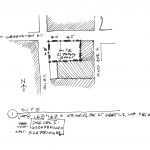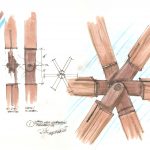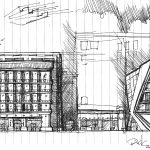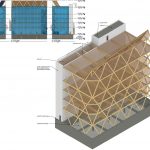ARE 5 Strategy
Study Strategies for Success
…on the exam and to become a well-informed architect. This will serve as a guide to those who may struggle to establish studying strategies. This provides non-vested interest subjective opinions and critical review of available study resources and ways to prepare for the ARE Exam. Please share any additional resources with RHW by email, and it may be added to this webpage.
(RHW completed ARE 5.0 and is now a registered architect in the state of Washington)
As a personal note, RHW spent several months assembling materials, reading blogs, trying various online video resources, purchasing different books, trying to use out-of-date study materials, and assessing the best ways to study for the ARE exam. RHW Designs will not reveal content on the ARE exams, in order to maintain the integrity of the exam and the profession of architecture. RHW does not guarantee results based on the information here – again, this is all subjective and only meant as a starting point for your own studying strategies.
Study Strategy 0 – North Arrow
Before doing anything, look for the North Arrow. North Arrows can be hard to spot, and drawings are not always depicted with North as up. The North Arrow will determine the results of an exam question before you’ve even begun reading the question. This is important for architects, because the sun has a tremendous impact on building design. One example regarding importance of solar orientation is glare. Another example that affects building placement is shadows from nearby buildings or trees. So remember, look for the North Arrow first.

Work-Life Balance
RHW has tracked studying for three exams. So far the results are less encouraging than originally believed. The graph below is an example of a 44-day study trend leading up to an exam. This accounts for a wide variety of content type: Review Manual, iPad Flash Cards, Videos, Wikipedia, Practical Application, AHPP and various other textbooks.
Work-Life Balance encompasses a lot. Each day may include making breakfast, traveling to work, working hard at the architecture firm, traveling home, making dinner, showering, laundry, grocery shopping, visiting friends, holiday or anniversary celebrations or a number of other normal day tasks. If you have a significant other struggling with you, don’t ignore them because they’ll be there for you if you are there for them. If you have children, then all the more power to you! But the key to studying for the exams will be fitting it in anywhere you can and asking for respect and leniency from your life partner and friends (besides, you will be able to design their dream house when you’re done).
After three exams, RHW has shown that one may achieve the following:
- 2.4 hours per Weekday and 3.7 hours per Weekend day
- or 16 hours per Week on average
Given the quantity of time needed to absorb the content suggested by NCARB, this is not enough time (read why below under the header “Reading”).
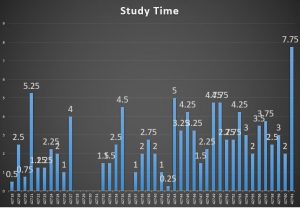
Study Strategy 1 – “Dry” Studying
Primary Study Material for the ARE 5.0
- NCARB ARE 5.0 Handbook : read this thoroughly and keep it nearby while studying. It also provides a comprehensive list of all book study resources near the end.
- ARE Review Manual $400 comes with practice material
- Architect’s Handbook of Professional Practice (AHPP): The most valuable study resource and will follow you for the rest of your career. see Kevin Griendling’s markup of the important sections to study
- Contract Documents: AIA provides printable, sample, contract docs for ARE Candidates – extremely useful.
- The AIA provides a resources page. You’ll find video study materials, sample Contracts, and a discount/promo code for those who are members of the AIA, here: Preparing for the ARE
- NALSA / Archiflash: Archiflash is an expensive flashcard app, $150! Whoa! However the content is legit… for ARE 4.0. Because 5.0 is so new, study material is still being developed. However Jared Zurn, Director at NCARB, says that using 4.0 material is a good way to study too. But, RHW suggests keeping the ARE 5.0 Handbook close at hand at all times to verify you’re studying the right material.
Flat out reading content. This will not help a test-taker retain information. Rote studying – studying the same content over and over – may increase the chances of remembering. However as an intrepid architect you must start somewhere, and ‘dry’ studying or reading suggested content will provide the base for where to start understanding architecture.
“Chunking”
- Read a Chunk: For about an hour each day, read a section of the ARE Review Manual (or other material of choice) – whether it’s a few pages at a time, or in-between bold titles, or between Example questions in the book.
- Take Notes: Make flash cards while reading, make notes and sketches (for visual learners) in a notebook, hi-light the related literature in the book, on printed contract docs, etc.
- Study Your Notes: On the bus, at a cafe, during lunch at work
- Repeat above in reasonable chunks of material. This will allow you to strengthen important details along the way.
- Move on to next chunk.
Reading
- Each page of reading takes roughly 5 to 8 minutes.
- For true comprehension, estimate +10 minutes per page – this includes taking notes, drawing sketch notes and additional research and going to other resources in the middle of reading a page to read more about a word, term or concept.
- (this data has been tracked by RHW during different study sessions)
Contracts, Contracts, Contracts!
- It’s clear that an architect needs to comprehend the AIA Contract Documents. Direct comparison of the AIA Contracts to the study books (such as the ARE 5 Review Manual from Ballast, and the AIA Architect’s Handbook of Professional Practice) shows that they pull directly from the text of AIA B101-2007 and the other Contracts.
- Taking into account the ‘Reading’ bullet point above: AIA Contract Document B101 has 18-pages of extremely dense material. Judging by how much study materials focus on Contracts, the ARE will be very likely to test your knowledge on Contracts.
- Reading B101 alone will likely take more than 10 minutes to read each page, or 180 minutes, or 3 hours. Because of the intense density of the material, you may count on more time per page to comprehend the content and even more time to apply and relate it to real-life situations.
- Contract A201 is 38 pages and the study books reference nearly every page of this Contract. A201 may take: 38 pages x 10 minutes per page = 380 minutes / (60 min/1 hr) = 6.3 hours or more!
- Some of the sections in the ARE Review Manual by Ballast are over 200 pages, which may take roughly 20 hours just to read.
- In other words, plan study time accordingly.
- Print out and fill in the Contact Document blanks. One of the most complicated but most important contracts in architecture is the G702 and G703. Which are also referenced in the ARE Handbook. Here’s a link to help you learn how to: fill in the blanks
Study Materials
- Mead 3×5 notebook keeps flashcards organized. Write a single study word/term/concept at the top of each page along with the resource material and page number, so that it may be verified in the future. Draw diagrams, write concise information and definitions, either on the same side or reverse.
- Red pen
- Black fluid ink pen (ballpoint pens cause minor strain in the wrist because they are ever-so-slightly more difficult to write with)
- Hi-lighter
- Sticky notes
- Small coffee cup
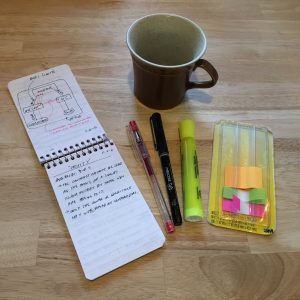
Stickies and Hi-Lighting with a ‘Grain of Salt’: These tools are useful when used right. Aimlessly putting stickies and hi-lighting will not help. Stickies will get drown in the sea of a thousand pages. The point of these tools is for you to identify the content that needs to be studied, estimate the time it will take to go through that content, form a plan, and then start. TIME Mag reported on some research.
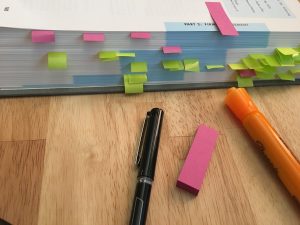
Book Stand – All of the ARE study materials, in physical form, are thick and heavy. RHW found that studying for long periods of time looking down at a book on a table created neck and eye strain. Position the book vertically; or use a computer monitor, for digital materials, that is level with the eyes to avoid neck strain.
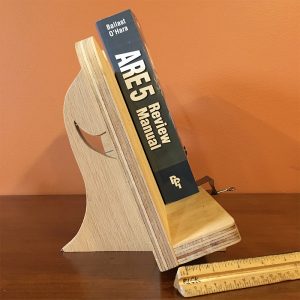
Strategy 2 – Visual Learners
Perhaps the majority of architecture enthusiasts are visual – we love images and visual experience, so why study text? Video courses are a great way for those seeking eye candy to rest their brain from the onslaught of textbooks and contracts. Be careful with a belief such as that however, because you’ll find in architecture that the entire career is composed by endless reading, research and math, with less than 4% spent on actual design. Accompanying reading with these online videos will help bolster knowledge, fill in the gaps, and to switch up how your brain is absorbing knowledge:
- Black Spectacles: good quality, clean and concise format, and consistent. AIA discounts are available with a promo code, if you’re a member.
- The content doesn’t align with the ARE 5.0 exam. RHW subscribed to Black Spectacles (B.S.) to prepare for PcM and PjM, and neither video lessons were valuable for the exam content.
- The lecturer over-simplified the lessons to the point where they were not helpful – but instead a huge time sink.
- RHW wasn’t able to take full advantage of all the available video content, classes, and ARE prep that come with the packaged discounted subscription. There was just too much information to be packing into a normal work-life-study balance. In other words: the packaged deal wasn’t worth paying more for the slight discount. RHW recommends subscribing and paying for 1-mo, watching the videos for the one exam section you plan to take next, use the promo code from AIA, then cancel the subscription before the renewal date. There is just too much other studying to be done, and you may want to take a break between exams, so you won’t want to pay for this premium service if you’re not using it. Plus, you may use the discount/promo codes each time you renew your subscription when ready to start studying for the next exam.
- Kevin Griendling’s Pluralsight: Kevin has produced lessons for both PcM and PjM, the other lessons are currently in the making.
- The Amber Book: Poke around this website for all kinds of great resources. Amber Book is not a one-stop shop however, and you’ll need to study other content once you’ve consumed all you can.
Strategy 3 – Testing Intervals
- For one month: read, review your own flash cards and sketch notes, watch supporting online videos – repeat.
- Then dive into the practice materials provided by PPI (or other resources), and schedule that exam while practicing. Basically one-month testing intervals.
- Why one month? Because the amount of information to study is tremendous! You may already be experienced in architectural practice, but that doesn’t mean you’ve been doing it the way that NCARB has constructed the exam, and you may miss large chunks of useful professional guides for good practice.
Strategy 4 – Practical Application
The most complicated part about the exam is that, according to the ARE Handbook, you will be asked to apply knowledge to practical situations. Every question will likely test your ability to understand a real-life issue and respond to it. This is complicated because it can be convoluted. While ‘dry’ studying, watching videos, and using flash cards are all good ways of looking at text and pictures over and over, nothing beats trying to solve problems with your brain.
The most successful study strategy is to generate practical application of the content that you study. What’s nice about the order of the exams is that they generally follow the course of a normal project. From starting a firm, to starting a project, to programming, SD, DD, CD and post-construction. Study by designing a building all along the way!
- Imagine a client
- Write a contract
- Identify a program
- Pick a complex building site
- Research local codes
- Research building codes
- Design a building
- Then show off the results to your friends
RHW searched first for a building site that encompassed the widest range of problems and complexity, in order to capture as much practical application as possible. Here are some fun renderings that resulted so far:
Try practical application of an architectural exploration with the site that RHW used, then let’s compare designs:
169 S Washington St, Seattle, WA
Remember to have fun, this will be the rest of your life after all…
Strategy 5 – After an Exam
Immediately go to your favorite cafe, reward yourself, then break out a notepad, because you’re not done yet. It’s important to reward your brain for hard work – your brain will learn to identify the exam with a reward – an important life lesson.
Testing Advice from Others
- Amber Book: offers more studying tips
- Kevin Griendling : offers some cool videos and testing strategies; including the above mentioned Pluralsight.
- NCARB ARE 5.0 Community: invaluable information from others who are currently testing.
- Ask for Architecture Firm Assistance
- These exams and study materials will add up in cost. Talk to your architectural firm leaders or HR department about whether the firm will help with the cost of the exams.
RHW will update this page periodically. And please email RHW of any inaccuracies, corrections, or additions. Last update: 2018/02/02
And look for the North Arrow.

